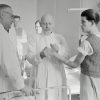How Your Director Hire Team Approach Can Revolutionize Recruitment: 7 Proven Ways to Boost Collaboration in 2025
In the complex world of healthcare, hiring the right clinical talent is paramount. However, recruitment efforts can falter if there’s a disconnect between Human Resources (HR)/recruitment teams and the clinical directors who will ultimately manage and work alongside new hires. Building a true partnership – creating an effective “Director Hire Team” approach – is essential for attracting top talent, ensuring cultural fit, and improving retention. Hathaway Healthcare Staffing’s approach emphasizes the power of such collaborations in achieving optimal workforce solutions.
Table of Contents
The Power of Partnership: Why a Strong “Director Hire Team” is Essential
When HR/recruitment and clinical departments operate in silos, hiring processes can become inefficient, leading to poor candidate experiences, misaligned hires, and increased turnover. A strong “Director Hire Team” collaboration, however, yields significant benefits:
- Better Candidate Quality: Clinical directors provide invaluable insights into the specific skills and cultural fit needed for their teams.
- Faster Time-to-Fill: Streamlined communication and shared understanding expedite the process.
- Improved New Hire Retention: Candidates selected with significant clinical input are often a better long-term fit.
- Stronger Clinical Teams: Collaboration ensures new hires integrate more effectively.
Effective collaboration, as highlighted by Harvard Business Review, is a key driver of organizational success across all industries, and healthcare is no exception.
Defining the “Director Hire Team”: More Than Just a Meeting
A “Director Hire Team” signifies more than occasional meetings between HR and clinical leadership. It represents a true, ongoing partnership where clinical directors are integral, respected members of the hiring process from start to finish. This collaborative model involves shared ownership of recruitment outcomes, mutual respect for each other’s expertise, and a joint commitment to attracting and selecting the best possible talent for the organization. It’s about breaking down departmental barriers to create a unified front in talent acquisition.
7 Proven Ways to Build a Strong “Director Hire Team” and Boost Collaboration
To foster this vital partnership and ensure your “Director Hire Team” approach is successful, implement these seven proven strategies:
1. Establish Shared Goals and Define Success Metrics Together
The first step in any effective collaboration is aligning on goals. HR/recruiters and clinical directors should jointly define what a “successful hire” looks like for specific clinical roles, considering not just technical skills but also soft skills, team fit, and long-term potential. Agree on key performance indicators (KPIs) for the hiring process, such as time-to-fill, quality of hire, and first-year retention rates. This shared understanding is crucial, as explored in aligning staffing strategy with organizational KPIs.
2. Involve Clinical Directors Early and Consistently in Defining Needs
Clinical directors possess firsthand knowledge of their team’s needs, the nuances of required clinical skills, and the specific cultural dynamics of their units. Involve them from the very beginning of the recruitment process—not just at the interview stage. Collaborate on developing accurate and compelling job descriptions and defining the ideal candidate profile. This early clinical director involvement in staffing ensures that the search is well-targeted. For best results, this collaboration should be part of a broader effective healthcare staffing needs assessment.
3. Create Joint Interview Panels and Standardized Evaluation Criteria
Including clinical directors or their designated senior staff on interview panels brings invaluable clinical expertise to the assessment process. Work together to develop standardized, behaviorally-based interview questions and objective evaluation rubrics. This ensures consistency, reduces bias, and leads to more informed hiring decisions. Such practices are key to designing inclusive interview processes in healthcare.
4. Foster Open and Regular Communication Channels
Maintain consistent and transparent communication between the recruitment team and clinical directors throughout the hiring lifecycle. Schedule regular update meetings to discuss candidate pipelines, search progress, market feedback, and any challenges. Utilize shared dashboards or communication platforms for real-time updates on candidate status. These efforts are fundamental to building effective recruiter-clinical director relationships.
5. Provide Cross-Training and Mutual Understanding of Roles
Invest time in helping recruiters better understand the clinical intricacies, specific skill requirements, and day-to-day realities of the roles they are sourcing for. Conversely, provide clinical directors with insights into recruitment best practices, current labor market trends, legal considerations in hiring, and the typical recruitment lifecycle. This mutual understanding strengthens the “Director Hire Team” dynamic.
6. Empower Clinical Directors in the Selection Process (While Ensuring HR Guidance)
Clinical directors will ultimately manage and work alongside the new hire, so their input in the final selection decision is critical for ensuring clinical buy-in for hiring. Empower them with significant influence in choosing the best candidate for their team, while HR/recruitment provides essential guidance on compliance, equity, compensation strategy, and overall organizational talent objectives.
7. Celebrate Hiring Successes and Learn from Challenges Together
Acknowledge and celebrate successful placements that result from strong HR-clinical collaboration. Equally important, when a hire doesn’t work out or the process faces significant challenges, conduct joint post-mortems to identify lessons learned and areas for improvement. This commitment to continuous learning and refinement strengthens the “Director Hire Team” partnership over time and aligns with building a strong healthcare talent development framework.
Overcoming Barriers to Effective HR-Clinical Collaboration in Hiring
Common barriers include time constraints for busy clinical directors, differing priorities between departments, historical lack of trust or understanding, and unclear roles in the hiring process. Strategies to overcome these include securing executive leadership support for collaboration, scheduling dedicated (even if brief) meeting times, clearly defining roles and responsibilities in a RACI matrix, and fostering a culture of emotional safety where open dialogue is encouraged.
Hathaway Healthcare Staffing: Facilitating Stronger Hiring Partnerships
Hathaway Healthcare Staffing understands that successful placements depend on a clear understanding of the needs of both HR departments and clinical units. We work to bridge communication gaps and ensure that the candidates we present are well-aligned with the specific requirements and cultural nuances identified by your collaborative “Director Hire Team.” When you partner with healthcare staffing experts, we support your internal collaboration by providing well-vetted, high-quality candidates.
Unified for Success – The Power of the “Director Hire Team”
Building a strong, collaborative “Director Hire Team” approach between HR/recruitment and clinical leadership is no longer a luxury—it’s a necessity for effective healthcare talent acquisition. This partnership leads to better hires, stronger clinical teams, reduced turnover, and ultimately, improved patient care. By investing in clear communication, shared goals, and mutual respect, your organization can unlock the full potential of this powerful alliance. For support in finding top healthcare talent that meets the needs of your entire team, contact Hathaway Healthcare Staffing.






